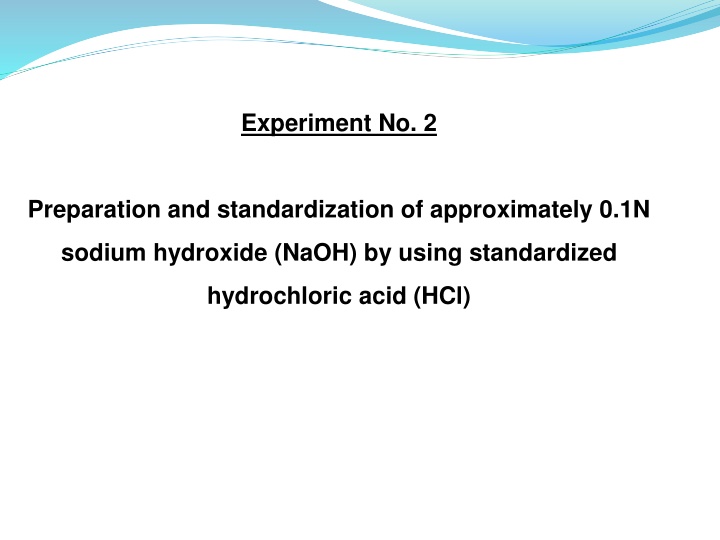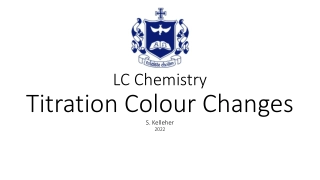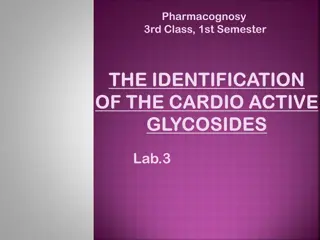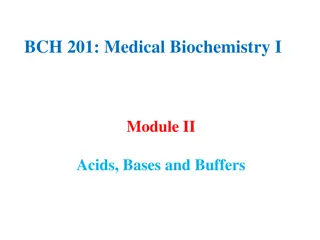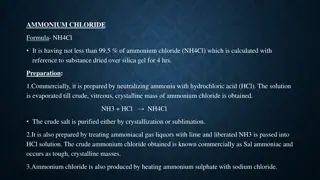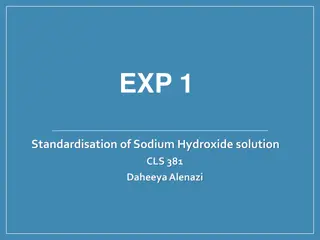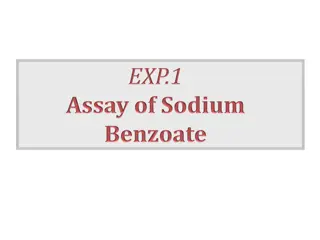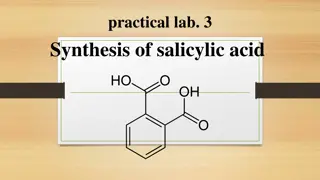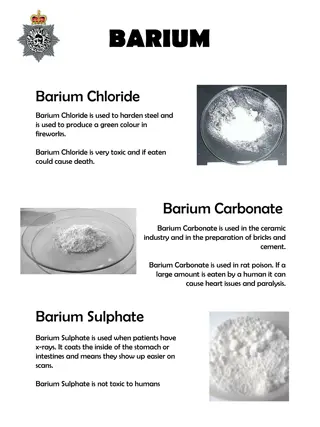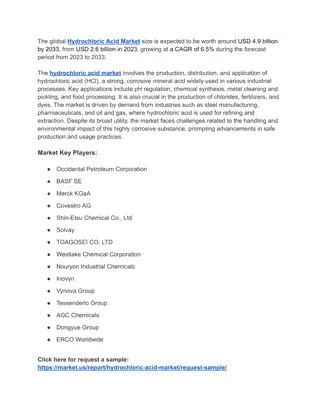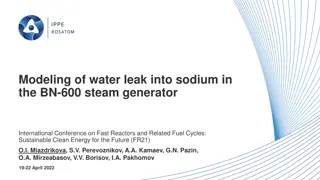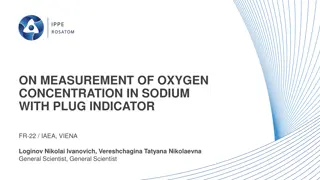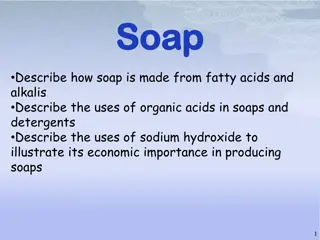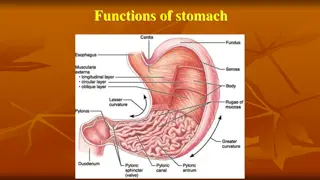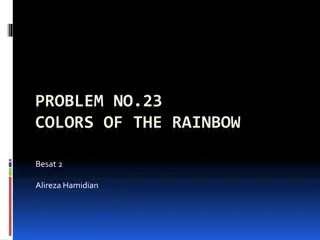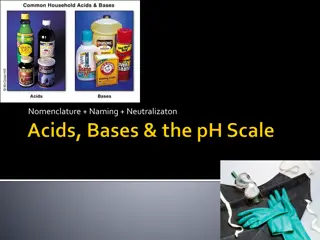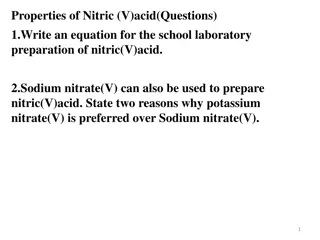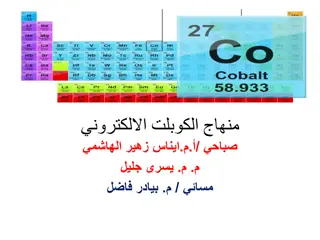Preparation and Standardization of Sodium Hydroxide Using Hydrochloric Acid
Preparation and standardization of approximately 0.1N sodium hydroxide (NaOH) using standardized hydrochloric acid (HCl) involves removing sodium carbonate from NaOH to obtain a standard solution. Methods like Ba(OH)2 method and anion exchange method are used for this purpose. The process includes preparing solutions, calculating equivalence points, and conducting the necessary reactions. The detailed procedure and calculations ensure the precise standardization of the NaOH solution.
Download Presentation

Please find below an Image/Link to download the presentation.
The content on the website is provided AS IS for your information and personal use only. It may not be sold, licensed, or shared on other websites without obtaining consent from the author.If you encounter any issues during the download, it is possible that the publisher has removed the file from their server.
You are allowed to download the files provided on this website for personal or commercial use, subject to the condition that they are used lawfully. All files are the property of their respective owners.
The content on the website is provided AS IS for your information and personal use only. It may not be sold, licensed, or shared on other websites without obtaining consent from the author.
E N D
Presentation Transcript
Experiment No. 2 Preparation and standardization of approximately 0.1N sodium hydroxide (NaOH) by using standardized hydrochloric acid (HCl)
Sodium hydroxide are always coated with thin layer of sodium carbonate as a result of reaction of hydroxide with atmospheric carbon dioxide (CO2). 2 NaOH + CO2 Na2CO3 + H2O Pure sodium hydroxide cannot be obtained; so that a standard solution of NaOH cannot be prepared by dissolving a known weight in a definite volume of water. Therefore carbonate should remove from sodium hydroxide before preparation of the solution. Several methods are available for this purpose:-
1- Ba(OH)2 method: A slight excess of barium hydroxide is added to the solution of NaOH to precipitate carbonate as BaCO3 (precipitation), then filtered the solution to remove the precipitate (Filtration). BaCO3 + 2 NaOH Ba(OH)2 + Na2CO3
2-Anion exchange method It involves passing NaOH solution through a column of a strongly basic anion exchanger which has higher affinity to carbonate anion CO3-2 than for hydroxide OH-. The carbonate is removed and replaced by OH- of the anion exchanger. NaOH solution CO3-2 CO3-2 -Form OH- -Form Anion exchange NaOH solution Free from CO3-2
Preparation of solutions Prepare 0.1N Na2CO3 in 250mL of distilled water. Prepare approximate 0.1N HCl in 250mL of distilled water. Prepare approximate 0.1N NaOH in 250mL distilled water. Reaction: NaOH + HCl NaCl + H2O
Preparation of approximate 0.1N NaOH in 250mL eq.wt of NaOH=M.wt of NaOH N eq.wt V(mL) Wt.= n 1000 1 23 +1 16 +1 1 1 = 0.1 40 250 = 1000 =40 g/mol =1.00gm Dissolve 1.00 gm of NaOH in 250 mL of distilled water to obtain 0.1N NaOH solution.
Calculation At the equivalence point no. of milliequivalence of NaOH no. of milliequivalence of HCl = (N1 V1)HCl= (N2 V2)NaOH (0.1 Vaverage) = N2 10 N2 10 0.1 Y = 0.1 Y 10 = ( ) eq/L NaOH N2=
